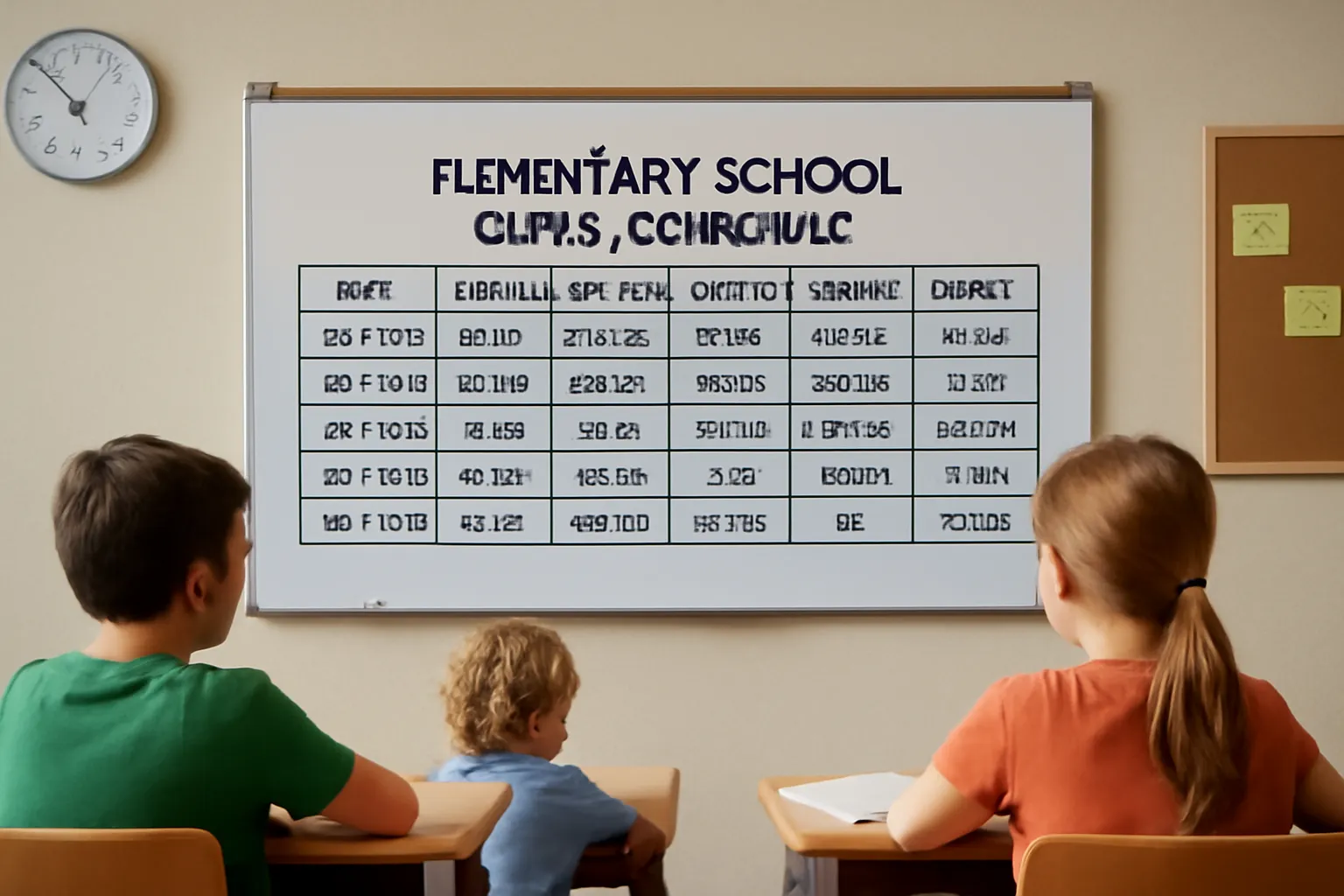Elementary school is a formative period in a child’s life. The structure and timing of classes play a critical role in shaping their academic and social development. In this article, we will explore how elementary school class schedules are structured, the importance of class timing, and how schools organize their days to ensure a balanced learning experience.
Understanding the Structure of an Elementary School Class Schedule
An elementary school class schedule typically consists of a series of subjects that vary in length and intensity throughout the day. From the first bell in the morning until the last class, each day is filled with opportunities for learning and growth. Most schools structure their days around a balanced combination of core subjects like mathematics, science, and language arts, along with periods dedicated to physical education, art, and music.
A typical schedule might have a rotation of subjects every 45 to 60 minutes, with short breaks in between. For example, a student may start their day with reading, followed by a math class, then a recess break, and then science or social studies. This rotation ensures that children are not sitting in one place for too long, which helps maintain their focus and engagement. Additionally, schedules may include lunch breaks and time for socializing, as these are important aspects of child development.
Why a Structured Schedule Matters
Having a clear and predictable schedule helps students feel more secure and understand what to expect each day. For teachers, it ensures that they can deliver lessons in an organized manner while ensuring there is enough time for each subject. Furthermore, a well-planned schedule allows for a variety of learning styles, as some subjects may require more hands-on activities or group work.
Example of an Elementary School Class Schedule
| Time | Subject |
|---|---|
| 8:00 – 8:45 | Language Arts |
| 8:45 – 9:30 | Math |
| 9:30 – 9:45 | Recess |
| 9:45 – 10:30 | Science |
| 10:30 – 11:15 | Social Studies |
| 11:15 – 12:00 | Art or Music |
| 12:00 – 12:45 | Lunch |
| 12:45 – 1:30 | Physical Education |
| 1:30 – 2:15 | Reading |
| 2:15 – 3:00 | Homework and Reflection |
The Importance of Class Timing in Elementary Schools
Class timing, while seemingly simple, plays a significant role in how students process information. Timing determines how long children are expected to stay engaged in a subject before moving on to another one. Studies have shown that children’s attention spans tend to be shorter than adults’, so breaking up the school day into manageable blocks allows students to stay focused and retain information better.
Additionally, proper class timing also helps ensure that students receive the necessary breaks for physical activity and social interaction. Elementary school schedules generally prioritize providing short but frequent breaks to prevent mental fatigue. These include recess, lunch, and, in some cases, special physical activities that provide a balance between intellectual and physical development.
Example of Effective Class Timing
In one study of elementary students, it was found that children who were given the chance to play during recess and had frequent breaks were more engaged during lessons compared to those who had longer periods of instruction without a break. Schools that use these shorter, more frequent time blocks tend to see better academic results and improved behavior.
A Closer Look at Lunch and Recess Times
Lunchtime and recess are important parts of the school day. Not only do they allow students to recharge physically, but they also give them the chance to interact socially with their peers. For instance, a study conducted in a large elementary school found that students who had a well-spaced-out lunch and recess period were less likely to exhibit disruptive behavior in the classroom.
Organizing the Day: Balancing Academics and Activities
An elementary school day is not just about sitting in classrooms and studying subjects; it’s also about balancing a variety of activities that contribute to a child’s development. In fact, many schools are increasingly recognizing the importance of incorporating creative activities like art and music, as well as physical activities such as physical education.
In addition to these subjects, some schools may include extra-curricular activities after school, such as sports, drama clubs, or homework help sessions. This allows students to explore interests beyond the academic curriculum and develop skills in other areas.
How Teachers Structure Their Lessons
While the class schedule sets the structure for the day, how teachers use their time within those blocks is just as important. Teachers typically use various teaching methods to ensure that their lessons are dynamic and engaging. This includes using visual aids, interactive activities, group discussions, and sometimes hands-on experiments, especially for science or art classes.
For example, a science class might involve an experiment or demonstration, while a language arts class might include reading aloud and group discussions. These approaches help maintain students’ attention and make learning fun and interactive.
Case Study: School Day Structure in Action
At a school in California, teachers have implemented a rotating schedule that includes core academic subjects in the morning, followed by enrichment activities in the afternoon. The rotation allows students to have a more diverse range of activities, such as learning to play a musical instrument or engaging in team-building exercises during physical education. As a result, students show higher engagement levels and demonstrate better problem-solving skills.
Read More on Organizing the Day
Conclusion
In summary, the elementary school class schedule is far more than a simple list of times and subjects—it is a carefully constructed plan that ensures students have enough time for both academic work and physical, social, and emotional development. A well-organized schedule supports not only cognitive learning but also the personal growth of young students, preparing them for future academic and life challenges.
As we continue to adapt to modern education needs, schools are increasingly experimenting with ways to optimize class timing and lesson organization. The balance between structure and flexibility ensures that children are not just learning in a classroom but are engaged and growing holistically.






